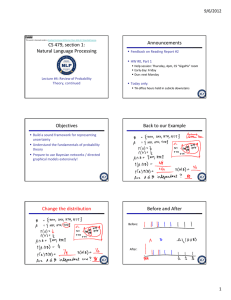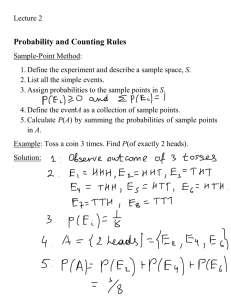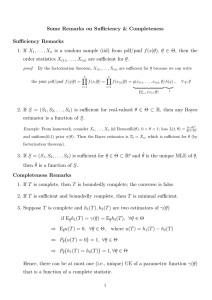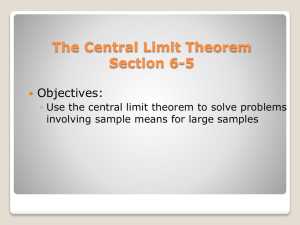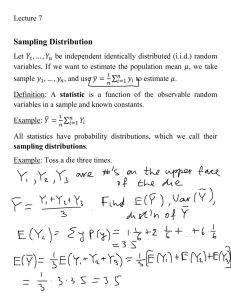Lecture 8
advertisement
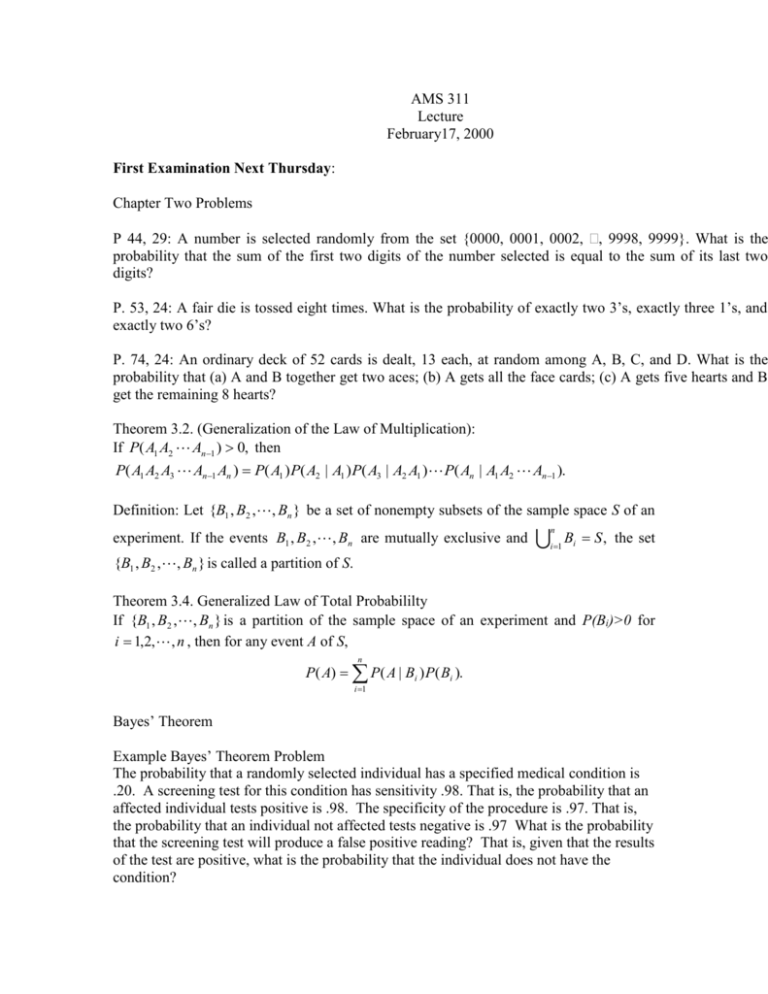
AMS 311
Lecture
February17, 2000
First Examination Next Thursday:
Chapter Two Problems
P 44, 29: A number is selected randomly from the set {0000, 0001, 0002, , 9998, 9999}. What is the
probability that the sum of the first two digits of the number selected is equal to the sum of its last two
digits?
P. 53, 24: A fair die is tossed eight times. What is the probability of exactly two 3’s, exactly three 1’s, and
exactly two 6’s?
P. 74, 24: An ordinary deck of 52 cards is dealt, 13 each, at random among A, B, C, and D. What is the
probability that (a) A and B together get two aces; (b) A gets all the face cards; (c) A gets five hearts and B
get the remaining 8 hearts?
Theorem 3.2. (Generalization of the Law of Multiplication):
If P( A1 A2 An1 ) 0, then
P( A1 A2 A3 An1 An ) P( A1 ) P( A2 | A1 ) P( A3 | A2 A1 ) P( An | A1 A2 An1 ).
Definition: Let {B1 , B2 ,, Bn } be a set of nonempty subsets of the sample space S of an
experiment. If the events B1 , B2 ,, Bn are mutually exclusive and
n
i 1
Bi S , the set
{B1 , B2 ,, Bn } is called a partition of S.
Theorem 3.4. Generalized Law of Total Probabililty
If {B1 , B2 ,, Bn } is a partition of the sample space of an experiment and P(Bi)>0 for
i 1,2, , n , then for any event A of S,
n
P( A) P( A | Bi ) P( Bi ).
i 1
Bayes’ Theorem
Example Bayes’ Theorem Problem
The probability that a randomly selected individual has a specified medical condition is
.20. A screening test for this condition has sensitivity .98. That is, the probability that an
affected individual tests positive is .98. The specificity of the procedure is .97. That is,
the probability that an individual not affected tests negative is .97 What is the probability
that the screening test will produce a false positive reading? That is, given that the results
of the test are positive, what is the probability that the individual does not have the
condition?
Definition: Two events A and B are called independent if
P( AB) P( A) P( B).
If two events are not independent, they are called dependent. If A and B are independent,
we say that {A, B} is an independent set of events.
Reasons for events to be independent:
Device has been constructed to have independent outcomes (roulette wheels, etc.).
A sample has been taken following the precise rules.
Experimental units have been randomly assigned to treatments.
To show two events are independent, apply the definition.
Example 3.31. An electric circuit has four switches that are independently closed or open
with probabilities p and 1-p respectively. If a signal is fed to the input, what is the
probability that it is transmitted to the output?


